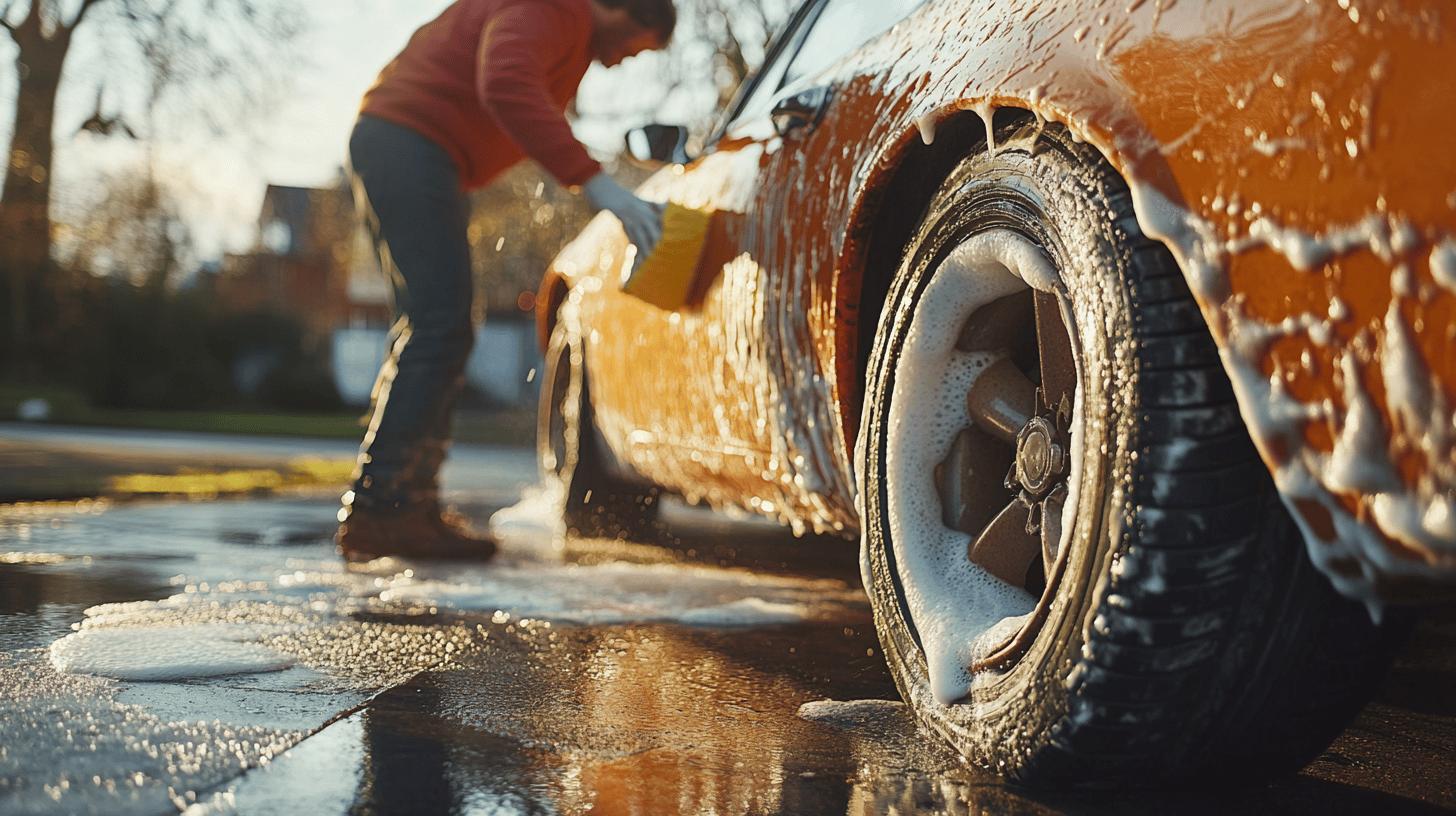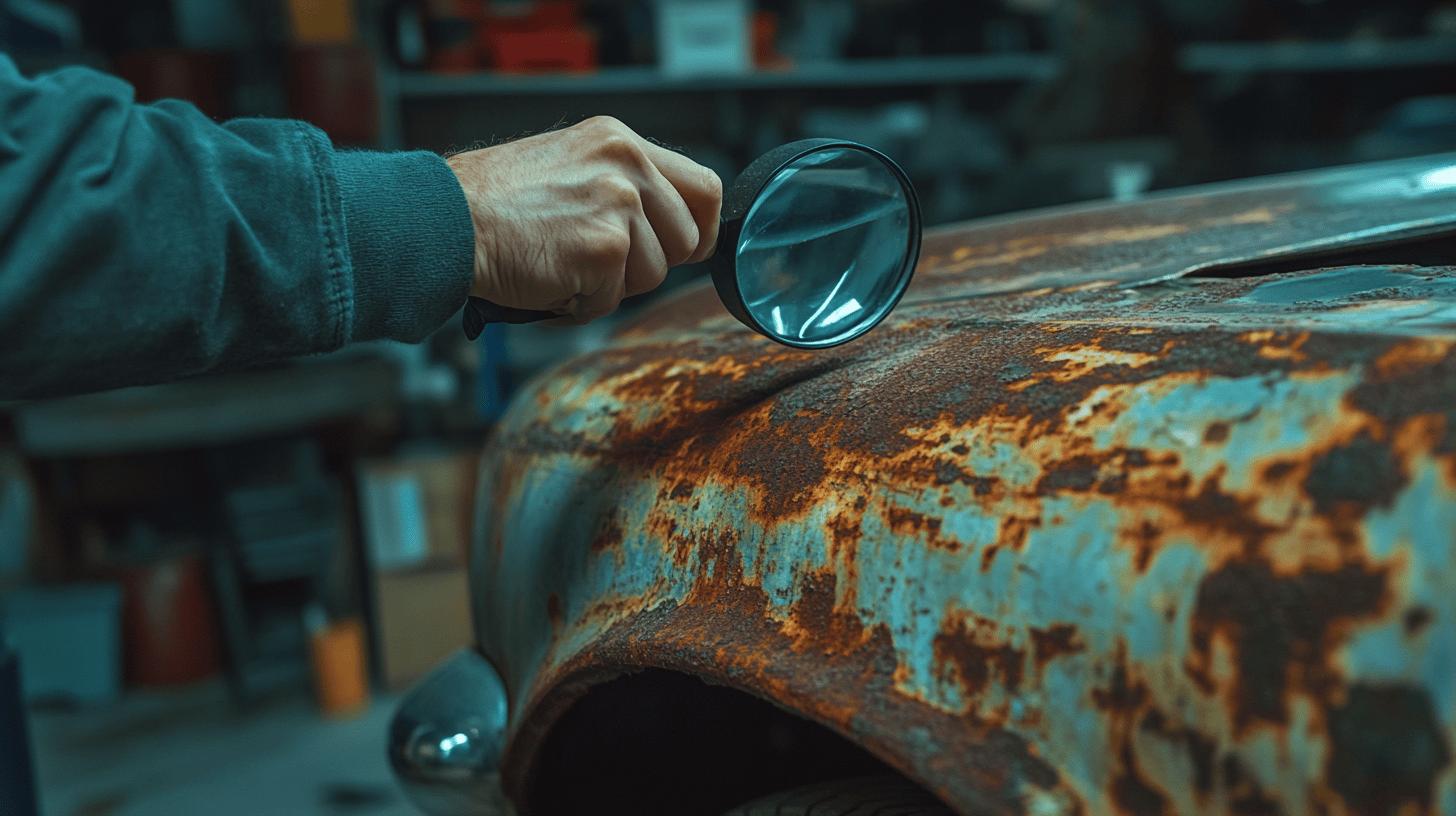Ever noticed a tiny spot of rust on your car and dismissed it, thinking it was harmless? Think again. Rust, if left untreated, can quickly escalate from a minor blemish to a serious problem, compromising your vehicle’s integrity and appearance. In this article, we’ll guide you through the crucial steps to address rust effectively, ensuring your car remains safe and looks its best. From identifying early signs to performing DIY repairs and knowing when to call the experts, we’ve got you covered. Ready to combat rust head-on? Let’s dive into the details!
Identifying Rust on Your Car
Surface rust is the earliest stage of rust development and is often signalled by paint bubbling, discoloration, and flaking. These signs indicate that the protective paint layer has been compromised, allowing moisture and oxygen to reach the metal surface. Addressing surface rust promptly can prevent further deterioration.
If surface rust is left untreated, it can progress to scale rust. This stage involves the corrosion eating deeper into the metal, causing noticeable pitting and roughness. Eventually, scale rust can develop into penetrating rust, where the metal becomes brittle and may develop holes. Penetrating rust compromises the structural integrity of the car, making it essential to address early signs of rust to avoid costly repairs.
- Undercarriage
- Wheel wells
- Body panels
- Door edges
- Exhaust system
Necessary Tools and Materials for Rust Removal
Having the right tools and materials is essential for effectively removing rust from your car. Using industry-standard products like Jenolite, which has been trusted since 1939, can ensure successful rust removal. For larger areas, apply Jenolite Thick Rust Remover or Rust Remover Gel, which are non-drip formulas that prevent spreading onto paintwork. For small rust spots, use Jenolite Rust Remover Gel in a 40ml tube, applying it with a small brush to target specific areas.
| Tool/Material | Use |
|---|---|
| Jenolite Thick Rust Remover | For large rusted areas; non-drip formula |
| Jenolite Rust Remover Gel | For targeted rust removal; prevents spreading |
| Small Brush | To apply rust remover gel to small spots |
| Microfibre Cloth | For wiping away rust and residue |
| Wire Brush | To keep rust remover active and prevent drying |
Step-by-Step Guide to Removing Rust

Before you begin removing rust from your car, it’s essential to clean the affected area thoroughly. Use washing-up liquid or baby shampoo with warm water and a sponge to remove any dirt, grime, or grease. This ensures that the rust remover can adhere properly and work effectively. Rinse the area well and let it dry completely before proceeding to the next step.
Next, apply Jenolite Rust Remover to the rusted area. To keep the rust remover active and prevent it from drying out, use a wire brush every 5 minutes. The rust will gradually turn dark grey or black, indicating that the remover is working. This process helps break down the rust, making it easier to remove. Ensure you keep the rust remover active until the rust is visibly separating from the metal surface.
Once the rust starts to separate, use a microfibre cloth to wipe the surface clean and reveal the bare metal underneath. It’s crucial to remove all traces of rust to prevent it from spreading or returning. After wiping away the rust, you may need to repeat the rust removal process if any rust spots remain. Finally, prepare the cleaned surface for painting or further protection to ensure long-lasting results.
- Clean the rusted area with washing-up liquid or baby shampoo and warm water.
- Rinse thoroughly and let the area dry completely.
- Apply Jenolite Rust Remover to the affected area.
- Use a wire brush every 5 minutes to keep the rust remover active.
- Look for the rust turning dark grey or black as a sign of effectiveness.
- Wipe the surface with a microfibre cloth to remove separated rust.
- Repeat the rust removal process if any rust remains.
- Prepare the cleaned surface for painting or protection.
Preventative Measures to Stop Rust from Returning
Regular maintenance and inspection are crucial in preventing rust from returning. Keeping your vehicle clean and dry can significantly reduce the risk of rust formation. Inspect your car frequently, especially after exposure to rain, snow, or salty roads. Look for any signs of paint damage, as chips and scratches can expose the metal to moisture and oxygen, leading to rust. Addressing these issues promptly by touching up paint or sealing scratches can prevent rust from developing.
Several products and techniques can effectively protect your car from rust. Applying a wax coating not only enhances the appearance of your vehicle but also provides a protective barrier against moisture buildup. Using WD40 can help disperse water from critical areas like door hinges and joints, reducing the risk of rust. Additionally, applying a rust blocker, such as XCP Rust Blocker, creates a protective film on metal surfaces, shielding them from moisture and corrosion. These products, when used regularly, can significantly extend the life of your car’s metal components.
- Regularly wash and dry your car to remove dirt and moisture.
- Apply a wax coating to protect the paintwork.
- Use WD40 to disperse water from door hinges and joints.
- Inspect and repair paint chips and scratches promptly.
- Apply a rust blocker to create a protective barrier on metal surfaces.
When to Seek Professional Help
DIY rust repair has its limitations. While minor surface rust can often be treated at home with the right tools and materials, more severe rust issues require professional attention. ChipsAway specialists, for instance, do not perform rust repairs because they cannot guarantee rust will not return. This limitation is crucial; improper treatment can lead to recurrence, exacerbating the problem and potentially causing more significant damage over time.
Professional rust repair offers several benefits, including access to specialised tools and expertise. Severe rust issues, such as scale rust or penetrating rust, may necessitate the full replacement of parts and panels, a task best left to experienced specialists. These professionals can ensure that repairs meet manufacturer standards, preserving the structural integrity and safety of your vehicle. Additionally, reputable rust repair specialists can provide warranties, offering peace of mind that the rust issue has been effectively resolved.
- Rust has penetrated deep into the metal.
- Large areas of rust are present on structural components.
- DIY rust treatments have failed or worsened the issue.
- Complete panel or part replacement is required.
Final Words
Addressing rust on your car early can prevent extensive damage. By identifying rust types and knowing common rust spots, you can effectively detect issues. Using proper tools like Jenolite and following a detailed rust removal guide ensures efficient repair. Preventative measures, such as applying wax coatings and using rust blockers, are crucial to stop rust from returning. If rust damage is severe, seeking professional help becomes vital.
By following these insights, you’re well-equipped on what to do if you spot rust on your car, maintaining both its appearance and integrity.
FAQ
How to fix small rust spots on the car
Fix small rust spots by cleaning the area, applying rust remover, and using a small brush to target affected areas. Wipe away the dissolved rust to reveal bare metal.
Tiny rust spots on the car
Treat tiny rust spots with Jenolite Rust Remover Gel. Apply it carefully using a small brush and ensure to keep the area clean and dry.
Should I buy a car with rust underneath
It’s generally advisable to avoid buying a car with rust underneath, as repair can be costly and challenging. Always inspect for rust on critical areas like the undercarriage.
How to treat surface rust on a car
To treat surface rust, clean the area thoroughly, apply rust remover, and keep it active with periodic brushing. Finish with a protective coating to prevent future rust.
Tiny rust spots on the car in the UK
In the UK, tiny rust spots should be treated quickly with a rust remover gel. Prompt treatment prevents further spread and ensures the longevity of your vehicle.
How to stop rust from spreading on a car
Prevent rust from spreading by applying a rust blocker and keeping the car clean and dry. Regularly inspect and reapply protective coatings.
How to remove rust from a car without sanding
Use Jenolite Rust Remover Gel to dissolve rust without sanding. Apply the gel, brush periodically, and wipe away the rust to reveal clean metal.
How to fix spot rust on the car?
Fix spot rust by cleaning the area, applying a rust remover, and brushing to keep the remover active. Wipe away the rust and finish with a protective coating.
What do you do if you notice rust on your car?
If you notice rust on your car, clean the area immediately and apply rust remover. Follow up with periodic inspection and protective coatings to prevent recurrence.
Is a little rust okay on a car?
A little rust is generally manageable if treated promptly with rust remover and protective coatings. Neglecting it can lead to more severe damage over time.
Can rust damage on a car be fixed?
Rust damage on a car can be fixed by cleaning, applying rust remover, and using protective coatings. Severe rust might require professional intervention and part replacement.

